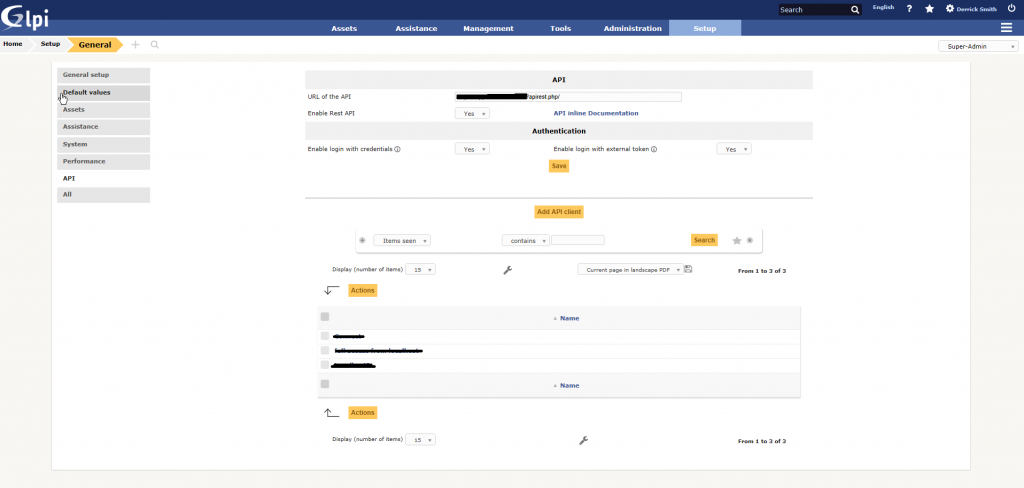Gone are the days when a customer cannot obtain logs related to the security operations of their hosted environments. Many vendors are coming around to the idea of providing their logs for analysis with on-premise solutions. Some are even providing APIs to directly provide those logs. Even SaaS providers are starting to offer log exports. Proofpoint is one vendor that makes pulling logs easy.
For those unaware, Proofpoint provides hosted spam filtering among other email related services including the anti-phishing solution called Targeted Attack Protection (TAP). The information included in the TAP logs, such as, phishing messages allowed and/or blocked are invaluable for security operations and could help organizations more easily identify and possibly prevent further attack. But the real value of this information is when it can be correlated with other events to gain better insight into the attack.
Proofpoint’s TAP solution includes a webservice API that can be used to gather system logs. The API is fully documented here and they have even created a basic script to help you export logs accordingly. For my purposes, the script needed to be modified to interact with the Alienvault USM SIEM.
To accomplish this I needed to modify the script to append new logs to a single log file. After a few simple changes to the script I was able to get it going with a cron job set to run every minute. I then configured Alienvault to look for that log via the proofpoint-tap plugin. Finally, I added a logrotate entry to clear the log accordingly. Below are the changes needed. I’ve also uploaded to Github for those interested.
Modify /etc/ossim/agent/plugins/proofpoint-tap.cfg
location=/var/log/ossim/proofpoint-tap.log
Create a logrotate entry for the plugin.
/etc/logrotate.d/proofpoint-tap
/var/log/ossim/proofpoint-tap.log
{
# save 4 days of logs
rotate 4
# rotate files daily
daily
missingok
notifempty
compress
delaycompress
sharedscripts
# run a script after log rotation
postrotate
invoke-rc.d rsyslog rotate > /dev/null
endscript
}
Copy the following shell script to your SIEM. Modify the file with your principal and secret variables. Then create a CRON job to run every minute.
* * * * * sh /opt/proofpoint-tap/retrieve-tap-siem-logs.sh
#author :Proofpoint
#date :2017-04-07
#version :1.1
#usage :bash retrieve-tap-siem-logs.sh
############################################################
#Version History
# 1.0 Initial Release
# 1.1 Some old versions of the 'date' command didn't support
# ISO8601-formatted timestamps. Fixed to be friendlier to
# those old versions.
# 1.2 Modified by Derrick Smith - modified for alienvault directories, logs to single /var/log/ossim/proofpoint-tap.log file
############################################################
#=============USER CONFIGURABLE SETTINGS===================#
# The service principal and secret are used to authenticate to the SIEM API. They are generated on the settings page of the Threat Insight Dashboard.
PRINCIPAL=""
SECRET=""
# Determines which API method is used. Valid values are: "all", "issues",
# "messages/blocked", "messages/delivered", "clicks/permitted", and "clicks/blocked"
ACTION="all"
# Determines which format the log is downloaded in. Valid values are "syslog" and "json".
FORMAT="syslog"
# Determines where log file are downloaded. Defaults to the current working directory.
LOGDIR="/var/log/ossim"
#=============END USER CONFIGURABLE SETTINGS===================#
LASTRETRIEVALFILE="$LOGDIR/lastretrieval"
LOGFILESUFFIX="proofpoint-tap.log"
ERRORFILESUFFIX="tap-siem.error"
TMPFILESUFFIX="tap-siem.tmp"
CURRENTTIME_ISO=`date -Iseconds | tr "T" " "`
echo $CURRENTTIME_ISO
CURRENTTIME_SECS=`date -d "$CURRENTTIME_ISO" +%s`
echo $CURRENTTIME_SECS
function interpretResults {
local STATUS=$1
local EXITCODE=$2
local TIME_ISO=$3
local TIME_SECS=$4
if [[ $EXITCODE -eq 0 ]] && [[ $STATUS -eq 200 ]]; then
echo $TIME_ISO > $LASTRETRIEVALFILE
cat "$LOGDIR/$TIME_SECS-$TMPFILESUFFIX" >> "$LOGDIR/$LOGFILESUFFIX"
rm "$LOGDIR/$TIME_SECS-$TMPFILESUFFIX"
echo "Retrieval successful. $LOGDIR/$LOGFILESUFFIX created."
return 0
fi
if [[ $EXITCODE -eq 0 ]] && [[ $STATUS -eq 204 ]]; then
echo $TIME_ISO > $LASTRETRIEVALFILE
rm "$LOGDIR/$TIME_SECS-$TMPFILESUFFIX"
echo "Retrieval successful. No new records found."
return 0
fi
mv "$LOGDIR/$TIME_SECS-$TMPFILESUFFIX" "$LOGDIR/$TIME_SECS-$ERRORFILESUFFIX"
echo "Retrieval unsuccessful. $LOGDIR/$TIME_SECS-$ERRORFILESUFFIX created."
logger -p user.err "Failed to retrieve TAP SIEM logs. Error in $LOGDIR/$TIME_SECS-$ERRORFILESUFFIX."
return 1
}
function retrieveSinceSeconds {
SECONDS=$1
STATUS=$(curl -X GET -w %{http_code} -o "$LOGDIR/$CURRENTTIME_SECS-$TMPFILESUFFIX" "https://tap-api-v2.proofpoint.com/v2/siem/$ACTION?format=$FORMAT&sinceSeconds=$SECONDS" --user "$PRINCIPAL:$SECRET" -s)
EXITCODE=$?
interpretResults $STATUS $EXITCODE "$CURRENTTIME_ISO" "$CURRENTTIME_SECS"
}
function retrieveSinceTime {
TIME=$1
STATUS=$(curl -X GET -w %{http_code} -o "$LOGDIR/$CURRENTTIME_SECS-$TMPFILESUFFIX" "https://tap-api-v2.proofpoint.com/v2/siem/$ACTION?format=$FORMAT&sinceTime=$TIME" --user "$PRINCIPAL:$SECRET" -s)
EXITCODE=$?
interpretResults $STATUS $EXITCODE "$CURRENTTIME_ISO" "$CURRENTTIME_SECS"
}
function retrieveInterval {
START_ISO=$1
END_ISO=$2
END_SECS=$3
STATUS=$(curl -X GET -w %{http_code} -o "$LOGDIR/$END_SECS-$TMPFILESUFFIX" "https://tap-api-v2.proofpoint.com/v2/siem/$ACTION?format=$FORMAT&interval=$START_ISO/$END_ISO" --user "$PRINCIPAL:$SECRET" -s)
EXITCODE=$?
interpretResults $STATUS $EXITCODE "$END_ISO" "$END_SECS"
}
if ! [[ -f $LASTRETRIEVALFILE ]]; then
echo "No interval file found. Retrieving past hour's worth of data."
retrieveSinceSeconds 3600
else
LASTRETRIEVAL_ISO=`date -f "$LASTRETRIEVALFILE" -Iseconds `
LASTRETRIEVAL_SECS=`date -d "$LASTRETRIEVAL_ISO" +%s`
(( DIFF=$CURRENTTIME_SECS - $LASTRETRIEVAL_SECS ))
if [ $DIFF -lt 60 ]; then
echo "Last retrieval was $DIFF seconds ago. Minimum amount of time between requests is 60 seconds."
logger -p user.err "Last retrieval was $DIFF seconds ago. Minimum amount of time between requests is 60 seconds. Exiting."
exit 0
fi
if [ $DIFF -gt 43200 ]; then
echo "Last successful retrieval of SIEM logs was $DIFF seconds ago. Maximum amount of time to look back is 43200 seconds (12 hours). Resetting last interval. Information older than 12 hours will not be retrieved."
logger -p user.warn "Last successful retrieval of SIEM logs was $DIFF seconds ago. Maximum amount of time to look back is 43200 seconds (12 hours). Resetting last interval. Information older than 12 hours will not be retrieved."
((LASTRETRIEVAL_SECS=$CURRENTTIME_SECS-43140))
LASTRETRIEVAL_ISO=`date -d @$LASTRETRIEVAL_SECS -Iseconds`
(( DIFF= $CURRENTTIME_SECS - $LASTRETRIEVAL_SECS ))
fi
if [ $DIFF -gt 3600 ]; then
echo "Last retrieval was $DIFF seconds ago. Maximum amount of allowable time for one request is 3600 seconds. Will split into several requests."
START_ISO=$LASTRETRIEVAL_ISO
START_SECS=$LASTRETRIEVAL_SECS
while [ $DIFF -gt 3600 ]; do
((END_SECS=$START_SECS+3600))
END_ISO=`date -d @$END_SECS -Iseconds`
(( DIFF=$CURRENTTIME_SECS - $END_SECS ))
retrieveInterval $START_ISO $END_ISO $END_SECS
START_SECS=$END_SECS
START_ISO=$END_ISO
done
LASTRETRIEVAL_ISO=$END_ISO
fi
if [ $DIFF -le 3600 ]; then
retrieveSinceTime $LASTRETRIEVAL_ISO
fi
fi
Be sure to reconfigure Alienvault with the alienvault-reconfig command. Afterwards, enjoy all the Proofpoint goodness inside Alienvault.

